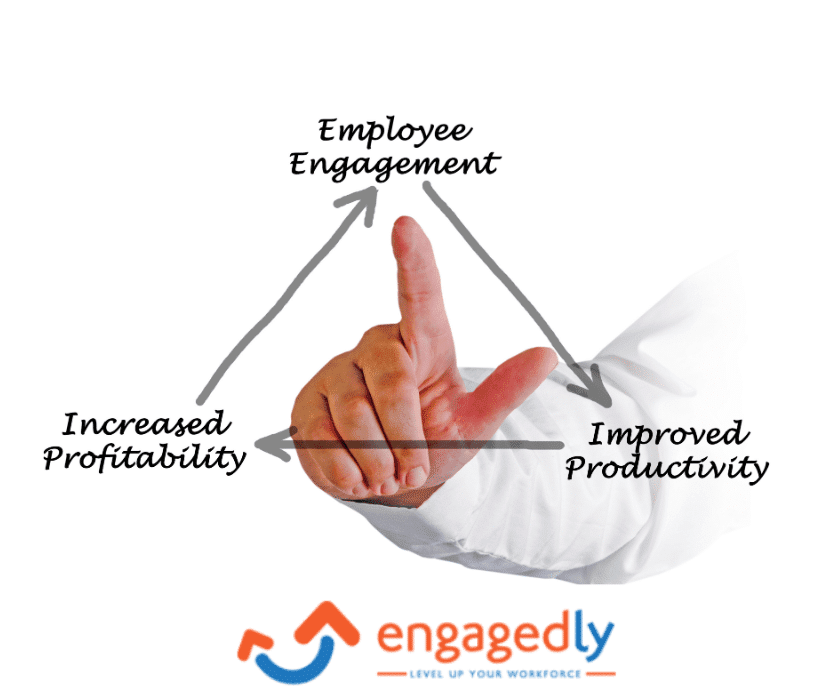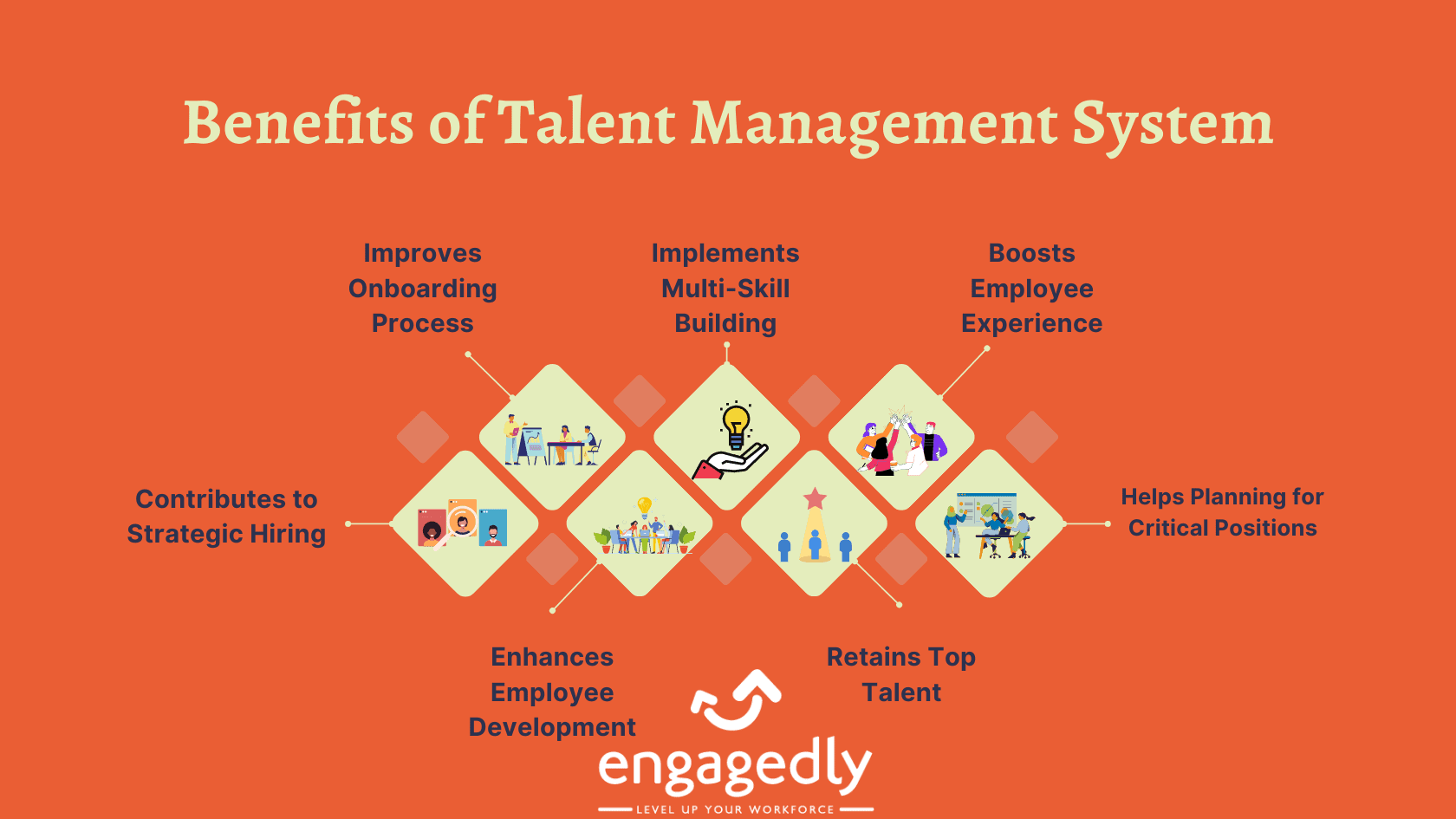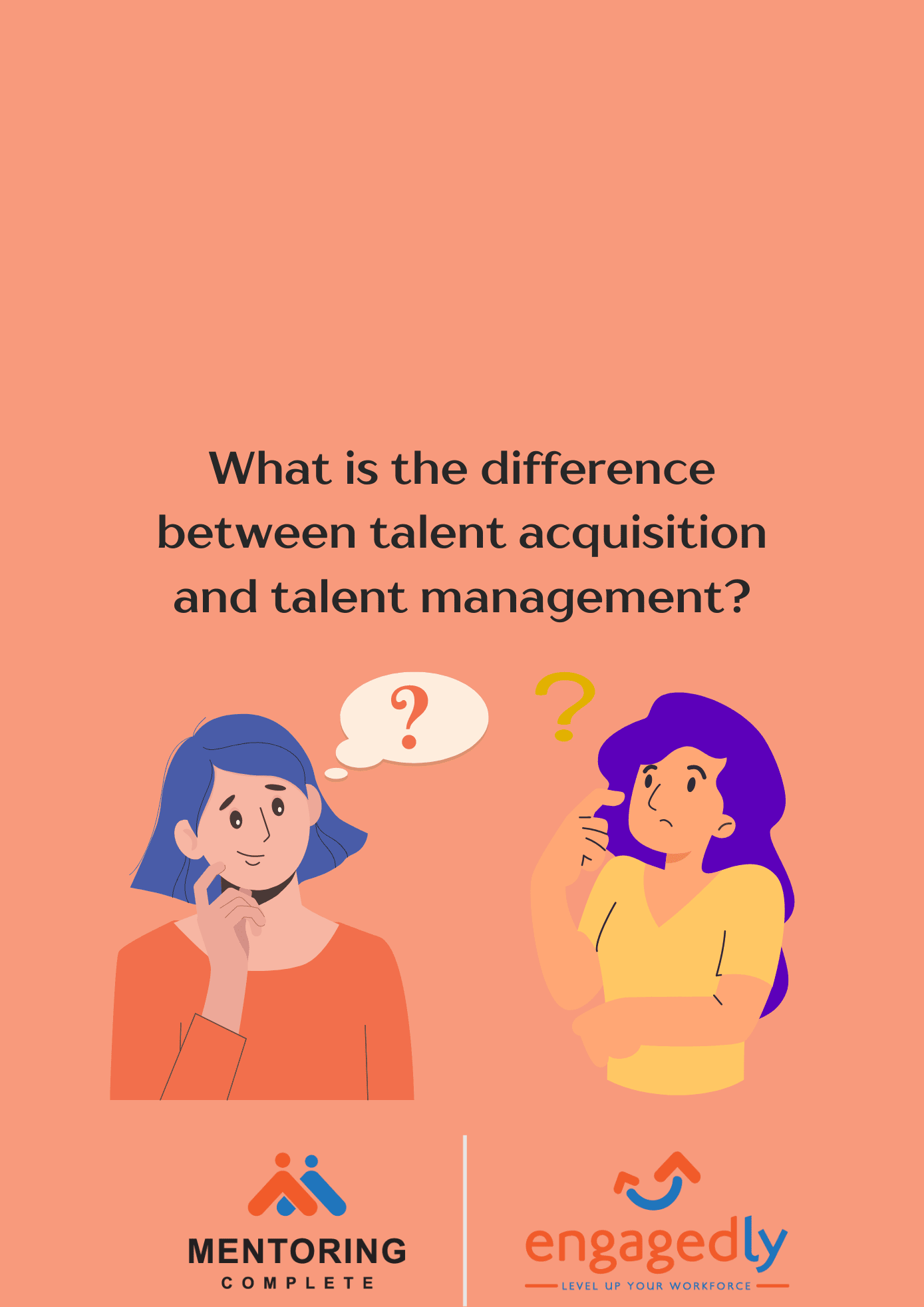In today’s fiercely competitive market, businesses must make substantial investments in human capital to ensure success. However, the consequences of a disengaged workforce and the loss of talented individuals can be detrimental to the organization’s bottom line. Ineffective employee retention management could lead to disaster.
|
Also Read: Benefits of Talent Management Software for Your Business
Why do we Need a Talent Management System?
While an effective talent management system is directly proportional to employee engagement, the latter has become an increasingly important part of any company’s success.
Engaging your employees will help them perform better and increase productivity. Research shows that when employees are engaged, they’re more productive than when they aren’t. They’ll also have higher morale, which means less turnover and increased loyalty.
The report showed that organizations that took steps to improve employee engagement saw a 21% improvement in productivity. There are now over 500 studies showing how investing in your employees leads to increased profits, better-quality products, happier customers, and improved morale.
Importance of a Talent Management System
TMS also plays a crucial role in boosting the overall productivity and profitability of an organization in the following ways:
1. Contributes to Strategic Hiring
A TMS allows you to automate many of the manual processes associated with recruiting, including creating job postings, managing applications and communicating with candidates. A TMS makes it easier to track each step of the recruitment process, helping you keep up with everything. You can even use a TMS to send automated cold emails to candidates based on specific criteria.
Enterprises need to have visibility into the destiny and pipeline tasks to make knowledgeable hiring selections. Resource capacity planning allows you to pick out the talent gap in advance. It enables avoiding last-minute scuffles for capable personnel and hires suitable talent units to fulfill destiny work demands. Depending on the scope and period of the tasks, you may hire permanent or contingent personnel.
2. Improves the Onboarding Process
The process of recruiting and hiring employees can be tedious and inefficient. This often leads to long hours spent filling out forms and waiting for responses. A good TMS can help automate the entire process of onboarding new hires. With a TMS, you can store all of the information gathered throughout the recruitment and hiring process into one centralized database. From there, it becomes easy to update each profile with relevant information.
You can even set up automated reminders to ensure that new hires are completing the necessary paperwork on time. This allows you to spend less time doing repetitive tasks and more time focusing on what matters most – growing your business.
Also Read: 10 Ways to Create the Best Employee Onboarding Experience
3. Enhances Overall Employee Development
An effective TMS solution also collects data about what skills an employee has. This information is used to provide personalized recommendations to the individual based on their job role and responsibilities. For example, an accountant might receive suggestions to learn how to use Excel while working on a specific project.
A good TMS enable employees to take advantage of educational opportunities and continue their professional growth. At the same time, it should make sure that every employee receives the appropriate training and support for their career goals.
4. Implements Multi-Skill Building
Limited and monotonous repetitive work can cause boredom and a sense of professional stagnation for most personnel. Not exposing them to numerous roles and sports hinders employees’ professional targets resulting in decreased morale, productivity, and unplanned attrition.
According to Gartner,” loss of profession improvement possibilities ends in 40% attrition in businesses worldwide.” Skill construction and improvement are substantial results of skills management.
Managers can enforce a task rotation approach that facilitates team contributors to diversify their ability sets. Workforce management answers seize their skills and allow the well-timed allocation of resources to the proper job. Encouraging personnel to construct a couple of secondary capabilities improves worker motivation and additionally enhances their billability.
Also Read: How to Upskill Employees: 6 Practical Tips
5. Retains Top Talent
Once you have the best employees in your organization, you need to keep those people. In fact, according to a study conducted by LinkedIn, companies lose up to 40% of their most talented workers every three years. And once they move on, there’s no guarantee they’ll come back. So why do we let our best people go?
A study by SHRM reveals that “the common hiring fee and lead-time are $4129 and forty-two days, respectively“. The employee turnover additionally consists of smooth prices which include reduced productivity, reduced engagement, training expenses, and cultural impact. Employee retention is an important factor of expertise control and consists of hiring the proper candidates and providing worker benefits, education, and development opportunities. If turnover is inevitable, additionally it is succession making plans for commercial enterprise continuity.
The truth is that retaining great employees requires effort. You need to invest in training, mentoring, and development. Otherwise, you risk losing out on some of the very people who can help grow your business. It is essential to enforce TMS in place to bring down the employee attrition rate in the company.
Also Read: 10 Best Employee Retention Strategies to Keep Your Best Talent
6. Boosts Employee Experience
A TMS that integrates with HR software allows companies to improve the employee experience by providing access to payslips and holiday requests. This helps employees feel valued and appreciated, while also improving productivity and reducing the likelihood of employee burnout.
Businesses can use workforce planning equipment to schedule group individuals for activities primarily based totally on their capabilities and interests. It has a huge effect on worker motivation and productivity.
According to Gallup, “utilizing the skills and strengths of employees regularly improves their engagement by six times.”
Providing good enough training possibilities for reskilling or constructing new capabilities allows hold their Individual Development Plan or IDP. Training new skills additionally makes sure that assets finishing up at the bench are billable as quickly as they’re rolled off from initiatives.
7. Helps Planning for Critical Positions
Succession planning is a vital technique of skills control that allows the creation of professional personnel able to fill management and different vital roles because the enterprise grows, changes, or develops. During enterprise enlargement or control turnover, succession-making plans guarantee that productiveness and worker morale aren’t always affected. Since the multi-professional team member’s function will want distribution amongst numerous employees, it may drastically spike resourcing costs. A workforce planning and management tool offers full visibility of assets throughout geographical barriers. It allows distribution work amongst multiple people from low-price locations. Thus, agencies can keep away from an unmarried factor of failure if a vital resource leaves the employer without finances overrun.
Talent Management Strategy
A talent management strategy is a structured plan that companies use to attract, develop, and retain their best employees to meet both immediate and long-term business goals. It’s about aligning an organization’s workforce with its vision and values by focusing on everything from hiring and training to employee growth, engagement, and succession planning.
5 Successful Talent Management Strategies
Talent management is everyone’s responsibility. But it doesn’t mean you have to do everything yourself. Here are five tips to help you recruit, hire and keep great workers.
1. Focusing on Data-Driven Recruitment
Data-driven recruitment strategies have been around for some time now. But it wasn’t until recently that we saw a shift toward a more data-centric approach to talent acquisition.
The latest wave of change began about four years ago when companies like LinkedIn and Hired launched AI-powered tools to assist recruiters. These platforms allow you to curate relevant jobs based on specific criteria, such as industry, salary range, and location. They also provide insight into how many open positions there are within a certain radius, what types of skills are needed, and whether those skills are in high demand.
This type of information helps recruiters make better decisions regarding where to focus their efforts. And because the majority of recruiters are already spending most of their time looking for qualified candidates, having a tool that makes finding those people easier and faster is a huge win.
2. Enabling Automated Recruitment
Personalized, intelligent nurturing will continue to be one of the most important keys to providing a premier candidate and hiring experience. As we move into the next decade, it will become even more critical to understand each prospect’s unique needs and preferences and tailor messaging to keep candidates engaged throughout the entire process.
One key facet of data-driven recruiting and Talent Acquisition (TA) is candidate nurturing. It’s about understanding how to reach out to candidates in ways that are relevant and engaging, while still keeping the conversation positive and productive. This includes reaching out via email, phone calls, text messages, social media posts, and landing page visits.
3. Promoting Internal Mobility
Talent acquisition leaders who prioritize internal mobile will be the ones who keep top talent. According to a recent talent climate report by Facebook, about 25% of roles were filled internally worldwide in 2023, showcasing a significant opportunity for businesses to improve their internal hiring strategies.
This is good news for those looking to fill positions, but it also highlights a growing issue for many employers: retention. The average tenure at an organization has dropped from 5.5 years in 2014 to 4.7 years in 2000.
4. Focusing on the Employees’ Mental and Physical Well-Being
Recruitment experts agree that companies should prioritize improving employees’ mental health and wellness. “As we move into the future, I think there will be a greater emphasis on how you treat people,” says Michael Littwin, CEO of TalentGuru. “You’re going to see organizations focusing on making sure that they’re treating their people well.”
In response to the growing demand for help, many companies have rolled out programs aimed at addressing workplace anxiety. Some offer free access to counselling sessions via phone, video chat, or email; others provide paid assistance for those who need it. Others still are offering flexible hours and telecommuting options in addition to financial support.
Also Read: Unique Ways to Support Wellness in the Workplace
5. Refocusing on Employee Engagement
The shift toward employee engagement is another trend that HR professionals should pay attention to. According to a survey by the Society for Human Resource Management, only 20% of respondents say their company provides training and development opportunities for its employees. That means 80% of workers don’t feel supported in their professional growth.
Employee engagement is not just about creating a fun work environment,” says Laura D’Andrea Tyson, president of the Center for Workforce Development at New York University Stern School of Business. “It’s about helping your workforce grow and develop professionally so they can contribute more effectively to your business.
To create a culture of learning and continuous improvement, companies must invest in training and education.
Talent Management Examples
1. Career Pathing and Development Programs
Structured career paths and development programs give employees a clear view of growth opportunities, motivating them to stay and progress. Take IBM, for instance—they offer employees plenty of tools to plan their careers, from training sessions to leadership programs, all designed to help folks move up the ladder. This approach keeps talent engaged and loyal since employees can see a future for themselves within the company.
2. Mentorship and Coaching Initiatives
Mentorship and coaching programs are invaluable for helping employees build skills and learn from seasoned leaders. General Electric (GE) is a perfect example—they have their famous “Crotonville” leadership development center where mentorship and coaching are core elements. This investment in mentorship helps GE cultivate internal talent, ensuring employees feel valued and prepared for future leadership roles.
3. Performance and Feedback Systems
Continuous performance management with regular feedback sessions keeps employees aligned with goals and helps them grow. Adobe made a smart move by replacing traditional annual reviews with their “Check-In” system, allowing for more frequent conversations between employees and managers. This setup has improved engagement and performance, creating a more constructive, stress-free feedback environment.
4. Succession Planning
This involves spotting and developing potential future leaders early on. Companies like PepsiCo have really mastered this. Their “Leadership Pipeline” is all about identifying top talent and preparing them for bigger roles, which keeps the company stable and ensures a smooth leadership transition when the time comes.
5. Employee Recognition and Rewards
Recognizing achievements through structured programs boosts morale and retention. Zappos is known for its culture of recognition, offering peer-to-peer recognition, performance awards, and fun perks like themed celebrations. This approach has helped Zappos keep turnover low and maintain a lively, engaged work environment.
Talent Management and Talent Acquisition: Are They the Same?
While talent management covers the entire employee lifecycle, talent acquisition is focused on recruiting and hiring candidates. This includes everything from screening resumes to conducting interviews to onboarding new hires into the organization. While it might seem like talent management and talent acquisition are one and the same, there are some key differences between the two.
One major distinction is that while both involve managing people, talent acquisition involves finding and attracting those individuals. In addition to sourcing potential employees, talent acquisition professionals typically work closely with human resources departments to recruit and screen job applicants. They also evaluate and recommend compensation packages based on skills and experience.
Also Read: A Complete Overview of Talent Management in a Changing Global Workplace
Talent management, meanwhile, tends to focus more on retention and development. Organizations use talent management software to track performance reviews and provide feedback to help improve overall productivity and efficiency. By focusing on the entire employee lifecycle rather than just recruitment, organizations can retain better workers and prevent turnover.
Talent Planning vs. Talent Management
|
Aspect |
Talent Planning |
Talent Management |
|
Primary Focus |
Future workforce needs and preparation for upcoming demands |
Current workforce lifecycle, development, and engagement |
|
Purpose |
Ensuring the organization has the right talent in place for future goals |
Developing, supporting, and retaining employees from hiring through to their career progression |
|
Key Components |
Workforce forecasting, skills gap analysis, succession planning, recruitment strategy |
Onboarding, training & development, performance management, employee engagement, retention |
|
Time Orientation |
Primarily proactive and future-focused |
Primarily present-focused but supports long-term employee growth |
|
Objective |
Address skill shortages, leadership gaps, and other future talent needs |
Nurture employee potential, boost engagement, reduce turnover |
|
Who It Affects |
Impacts hiring strategies, training needs, and resource allocation for future roles |
Directly impacts current employees’ experience, growth, and career satisfaction |
|
Approach |
Strategic and analytical, often data-driven |
Holistic and people-centered, focused on employee journey and satisfaction |
|
Common Activities |
Workforce planning, analyzing future skill needs, forecasting hiring requirements |
Goal setting, feedback, career development, recognition, and retention efforts |
|
Success Indicators |
Workforce readiness for future roles, reduced skill gaps, effective succession pipeline |
High employee engagement, low turnover, strong performance outcomes, and career progression |
Final Thoughts
Talent management is one of those buzzwords that seems simple enough, but it encompasses a lot of things. From recruiting to performance evaluation to compensation planning, many different aspects of human resources management fall under the broad heading of talent management. In addition to being able to manage people effectively, you must be able to understand what motivates employees and how to motivate them.
You might think that this sounds like a tall order, but there are plenty of jobs out there that require just such skills.
Frequently Asked Questions
Q1. What is a talent management framework?
Ans. A talent management framework is a strategic plan that outlines what you want to achieve, such as increasing revenue, improving customer experience, or reducing costs. It often includes recruiting, hiring, engaging, developing, managing, recognizing, and/or promoting employees. You can use it to align your people strategy with your business goals.
Q2. What does talent management include?
Ans. There are myriad responsibilities associated with talent management, including workforce planning, recruiting, onboarding, training and development, performance management, succession planning, compensation and benefits, and compensation review. Many companies neglect one or more aspects of talent management, leading to poor outcomes.
However, investing in talent management can yield significant returns. For example, according to a study conducted by Towers Watson, organizations that invest $1 million annually in talent management see an average return of $2.5 million over five years.
Q3. What are the main objectives of a talent management program?
Ans. The main objectives of a talent management program are to develop a high-performing workforce that allows the company and its clients to achieve their objectives. This includes:
- Creating a high-performance workforce, reducing the skills gap between employees’ skills and the organization’s business needs
- Reskilling employees so the company continues to be competitive, retaining and motivating the most talented employees, increasing employee engagement with both learning material and the company’s vision
- Improving overall organizational performance





















